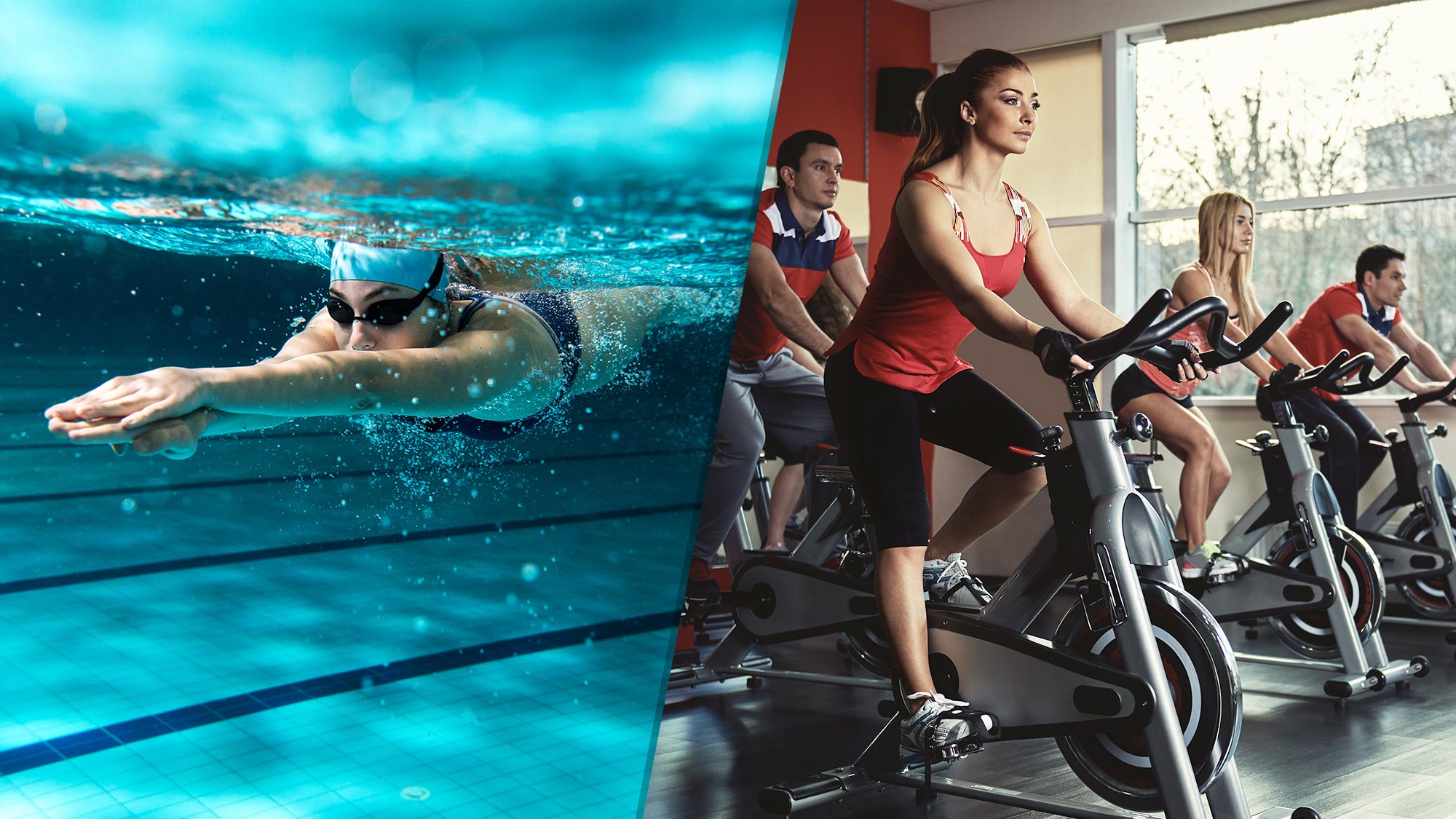Is swimming better for you than cycling?
They’ll both help you get fit and lose weight, but which is better for you in the long run?

Is swimming better for you than cycling when it comes to keeping fit, staying healthy, and losing weight? Both swimming and cycling are brilliant, accessible ways to keep fit and can be done with little expense, but if you’re wondering which is a better workout overall and which will help you reach your weight loss goals, you’ve come to the right place.
If you’re deliberating between which to take up as a new hobby, or just which to focus on in your latest health kick, before you buy one of the best exercise bikes or dig out your swimming costume, we’ll help answer all your questions below.
- More of a runner? The best running shoes to buy right now
- How long do you need to hold a Plank to see results
Swimming vs cycling: Which is a better workout?
Both swimming and cycling are relatively low-impact activities, which means if you’ve injured yourself training for a marathon, or have a knee condition that means you have to be careful in the weights room, both should be fine for you (although always check with your doctor if you’re not sure). The Centers for Disease Control and Prevention (CDC) recommends 150 minutes of exercise per week in order to stay healthy, and both swimming and cycling can help you reach that goal.
Research has found both swimming and cycling have a positive effect on overall health, especially heart health. One study of more than 80,000 adult swimmers found that they had a 41% lower risk of dying of heart disease. Another study that looked at the benefits of commuting to work on a bike showed that those who did cycle into the office had a lower risk of cardiovascular diseases. So if you’re worried about your overall health, both are great.
One major difference between the two is the water, which sounds like a stupid observation, but actually, as the water supports your body weight when swimming, there’s no stress on your joints. Swimming also works all of the major muscle groups in the body, no matter which stroke you choose.
Cycling, on the other hand, is low-resistance but does still put some pressure on your joints, although it’s not much. In fact, cycling is still recommended as an exercise for those suffering from arthritis, and research showed that both cycling and swimming can reduce joint pain and stiffness. Compared to swimming, you don’t need to learn or perfect a specific stroke to get the most out of cycling; you can just jump on your bike and pedal. That said, you’re not working quite as many muscles, mainly your lower body and core.

Swimming vs cycling: Which is better for weight loss?
If weight loss is your main goal, calorie burn is important. Of course, like all sports, the exact amount of calories you’ll burn during exercise depends on your body weight and the intensity with which you swim or cycle.
Get instant access to breaking news, the hottest reviews, great deals and helpful tips.
When it comes to swimming, butterfly stroke burns more calories than breaststroke, and on the bike, pedaling harder and faster up a hill will burn more calories than gently cycling around the park.
As a guide, during 60 minutes of exercise, a 70kg person would burn 700 kcal swimming laps of breaststroke, 704 kcal swimming laps of front crawl, and 818 kcal swimming laps of butterfly. On the bike, a 70kg person would burn 422 kcal cycling at a speed of 9-11 mph, or 563 kcal cycling at a speed of 11-13 mph.
Swimming burns a lot more calories than cycling per hour, because the water acts as a resistance, forcing your muscles to work harder to move. As mentioned above, it’s also a full-body workout. That said, swimming for an hour is tough and not something that everyone will be able to dive in and do. If you’re not a confident swimmer, this might mean that you’d actually burn more calories heading out for a long bike ride on the weekend, as it’s easier.
To lose weight, you need to be in a calorie deficit and both swimming and cycling can help you do this, it’s purely a matter of deciding which you are most comfortable doing.
Swimming vs cycling: Which is better in the long term?
If you’re worried about getting injured, swimming is probably safer than cycling, as you’re less likely to be in an accident than you are when riding alongside road traffic. However, if you’re completely new to swimming, it is important to get lessons before diving into the deep end.
For swimmers, the most common injuries are usually focused around the shoulders, so if this is a weaker area, be sure to watch out for overuse issues after regular trips to the pool. For cyclists, aside from impact injuries caused in collisions, common overuse injuries are usually focused around the knee.
Both exercises are extremely convenient and can be inexpensive — though the cost of cycling definitely has the potential to be far higher. Theoretically, all you need to go cycling is a bike and a helmet, so if you already have those, you're sorted. But if you don’t already have a bike, buying one can be a big expense. Plus, if you’re planning to cycle regularly, you might want to invest in some bib shorts and cleats to make things more comfortable. You’ll also need to buy bike lights and a bike lock if you’re planning to commute on your bike, and there are endless other bike gadgets to invest in along the line. People can (and do) spend thousands on cycling.
For swimming, you’ll only need a swimming costume and a pair of goggles, so it is the cheaper of the two options. That said, if you are serious about your weight loss goals, investing in an activity tracker is a good way to keep an eye on your calorie burn — we’ve rounded up the best fitness trackers here.
Ultimately, both swimming and cycling are brilliant ways to keep fit — but the best exercise is the one you want to do. If diving into your local swimming pool fills you with dread, it’s not going to be something you drag yourself out of bed for at 6 a.m. every morning. In which case, cycling your commute or buying one of the best Peloton alternatives will be a better option.
Swimming burns more calories in an hour, whereas cycling can be more convenient and easier to learn, but both are great for your overall health and beneficial for weight loss.
- Want to get fit? 5 exercises you shouldn't be doing and what to do instead

Jane McGuire is Tom's Guide's Fitness editor, which means she looks after everything fitness related - from running gear to yoga mats. An avid runner, Jane has tested and reviewed fitness products for the past five years, so knows what to look for when finding a good running watch or a pair of shorts with pockets big enough for your smartphone. When she's not pounding the pavements, you'll find Jane striding round the Surrey Hills, taking far too many photos of her puppy.
